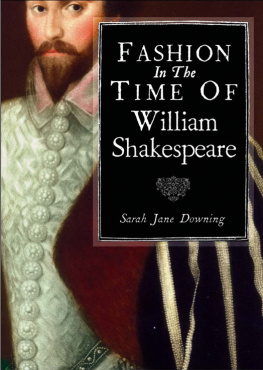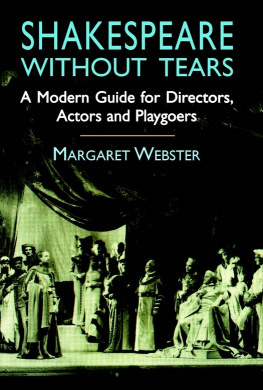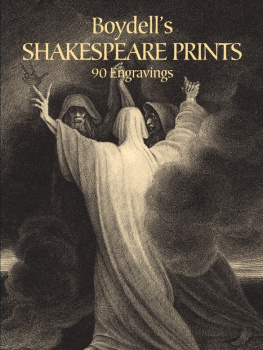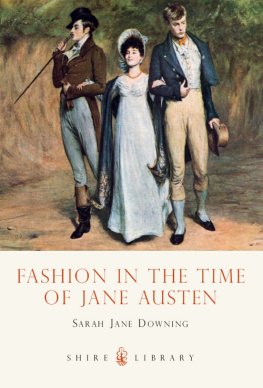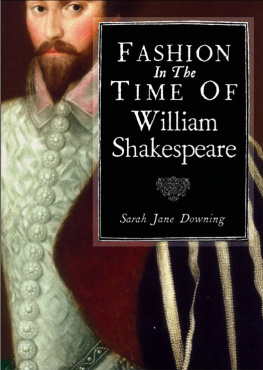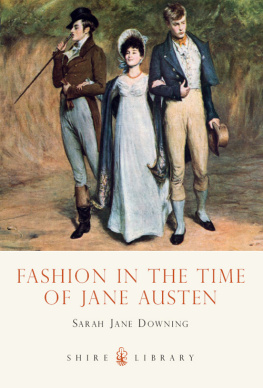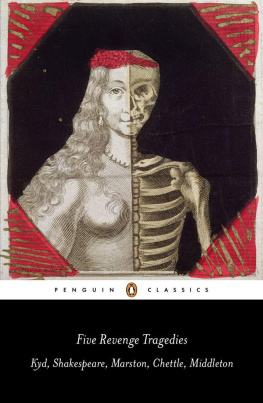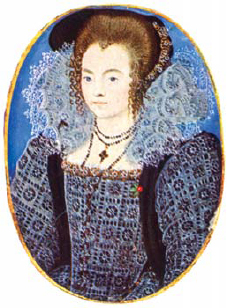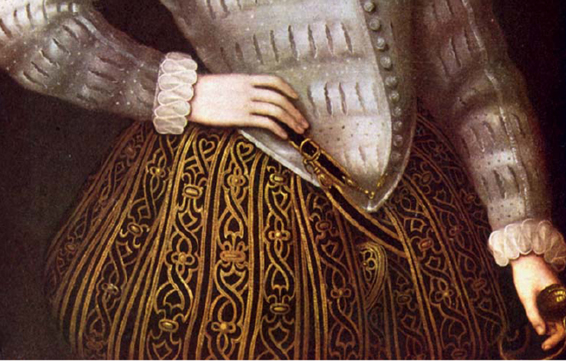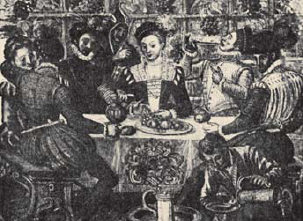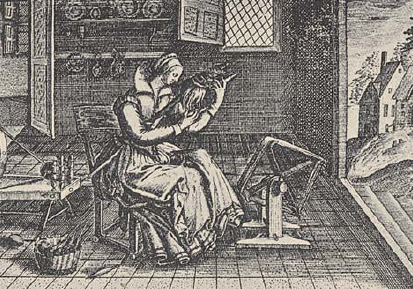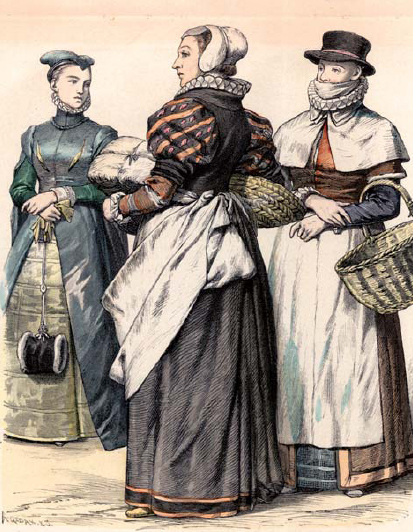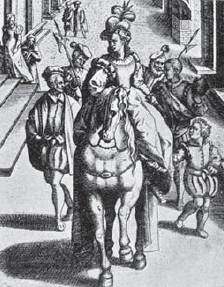FASHION IN THE TIME OF WILLIAM SHAKESPEARE
Sarah Jane Downing
Detail of image on .
CONTENTS
WOOL, GLORIOUS WOOL
S HAKESPEARE BELIEVED THAT clothes maketh the man and dressed his characters accordingly using costume not only to denote character, but also to drive plot through subterfuge and disguise, notably through cross-dressing. Garments and fashions feature in almost all of his plays, occasionally even as the pivot of the story, as with Malvolios stockings in Twelfth Night, the handkerchief in Othello and the sleeve given as a love token in Troilus and Cressida.
Shakespeare extensively explored what could happen if the strict rules of dress were transgressed, from the potentially serious consequences of violating the social contract, to the folly of individual vanity. He raises more than a smile when characters cross-dress, opening up issues of identity and sexuality at a time long before individual expression was considered important.
Shakespeares use of disguising women as improbable pageboys seems rather clumsy to the twenty-first-century eye but in the late sixteenth century it was a popular dramatic device that had quite a different resonance. There was a curious frisson of seeing a young crack-voiced boy playing a girl who was pretending to be a young man, which would have been enjoyed by theatregoers as much as farcical humour. Fashionable young men of the time delighted in all kinds of finery and made themselves look quite effeminate, to the disgust of conservative commentators as Shakespeare described, like the hawthorne buds that pranced around court and it was not too much of a theatrical stretch for a woman to be convincingly disguised as a handsome young man.
Moralists like Philip Stubbes were deeply upset by women adopting male styles, describing them as stinkyng before the face of god and offensive to man.
Elizabethans were used to finding amusement in role exchange since it was a popular element of festivities each Christmas, introduced by the Lord of Misrule. Most often it consisted of a lowly servant exchanging roles with a lord, but from the 1580s on there are reports of women exchanging clothes with husbands or brothers that were written of with bitter disapproval by Puritan commentators. Unsettled by the unnaturalness of a female monarch, they held a deep-seated fear that women who adopted breeches under their skirts for riding or wore masculine styles of doublet or hat would be tempted away from their rigidly defined female role into immoral freedom. Mary Fitton, one of the Queens ladies-in-waiting, caused outrage when she slipped out at night to meet her lover disguised in a mans cloak with her skirts tucked up in a most unseemly manner to mount her horse; the misuse of cloak and skirt were almost a greater scandal than the lover!
Such excitement was strictly for the silk-brocaded classes; for the rest it was wool, from the finest worsteds down to itchy homespun. Wool was at the heart of the economy, so much so that the Lord Chancellors seat of power in Parliament was upon a woolsack sent by wool merchants as a reminder of their place as the backbone of English wealth. It was the need and desire to establish new markets for English wool in the 1560s that encouraged daring entrepreneurs to travel to mysterious lands such as Persia, Russia, West Africa, Morocco and the Americas. They established trade links and enriched the kingdom with territories such as Virginia and newly discovered commodities of potatoes, tobacco and cotton, while laying the groundwork for England to rule the waves. Sadly it was also the birth of Britains participation in the slave trade.
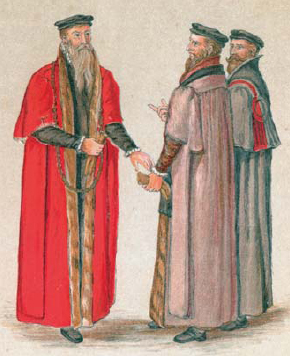
Lord Mayor and Aldermen (Lucas van de Heere, c. 156671). Made in rich wool and fur-lined, the Guild gown was a status symbol that could be earned only by a lifetime of hard work.
If wool was the heart of the economy, then fashion was its lifeblood, producing wealth and driving demand. No longer content to wait until their senior years to wear the furred finery of a Guild gown, the nouveau riche wanted to enjoy the silks and velvets imported from Venice, or exciting fabrics such as russels, darnick and tuff mockado that were newly in production in England as part of the influx of Artisan Strangers. In many cases they had made their wealth on the back of Englands millions of sheep, and a great number of their rank felt that it was an appalling betrayal to wear anything other than decent English wool.
In addition to running her home, a good wife of the lower orders would spin her own wool, weave it and use it to make clothes for her family.
The Shepherdess (woodcut, c. 1580), adheres to sumptuary law if not its spirit so long as she makes her gown from wool and keeps her ruff suitably small.
Most people revelled in their disposable income and were desperate to wear the finest their money could buy from glamorous gilded rebatos and fans down to the silkiest peach stockings even if that meant breaking the law. Sumptuary laws that dictated what each social class was allowed to wear were relaxed somewhat from earlier reigns, but still issued periodically between 1559 and 1597. Some were clearly defined to promote English industry over foreign imports, but most were aimed at maintaining class order.
Figures derived from Hoefnagels map of Nonsuch Palace (c. 1574). The countrywoman is marked by her chin clout worn to protect from dust while travelling, but even she wears a ruff.
In 1592 the Duke of Wrttemberg wrote: The women of England go dressed out in exceedingly fine clothes whilst at home perhaps they have not a piece of dry bread.
Fashion was a political issue, as a matter set in law, allowing luxury for some and debarring others. Many people felt that greed and social climbing were not only sins, but also seriously damaging to an economy rendered fragile by inflation. William Harrison in his Description of England (1577) worried, Oh, how much cost is bestowed nowadays upon our bodies and how little upon our souls!
Deeply concerned by the variety and confuse mingle mangle of apparell, the Puritan writer Philip Stubbes felt that pride in dress was the greatest sin of all, as beautiful garments were the devilles nettes, to intangle poore soules in

